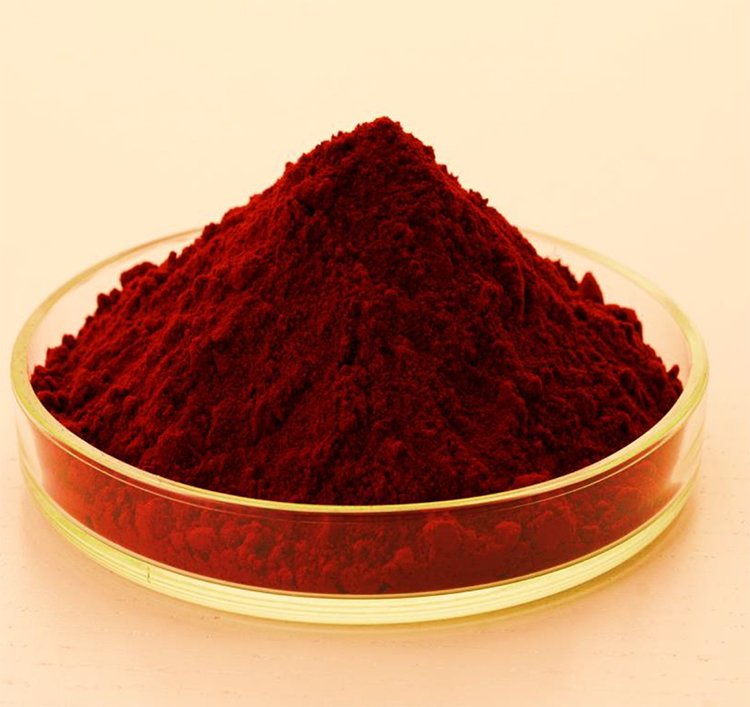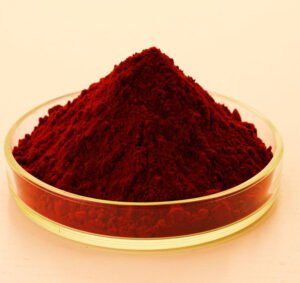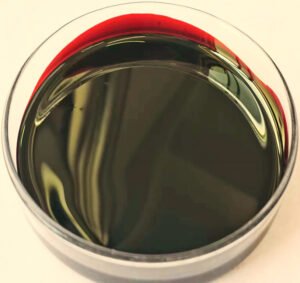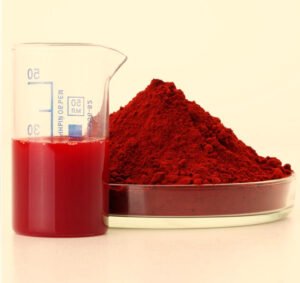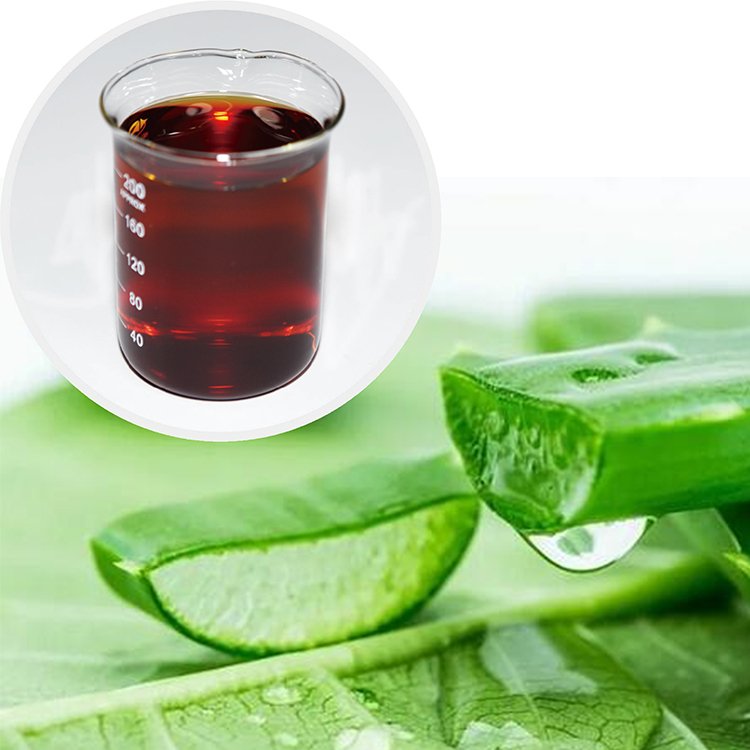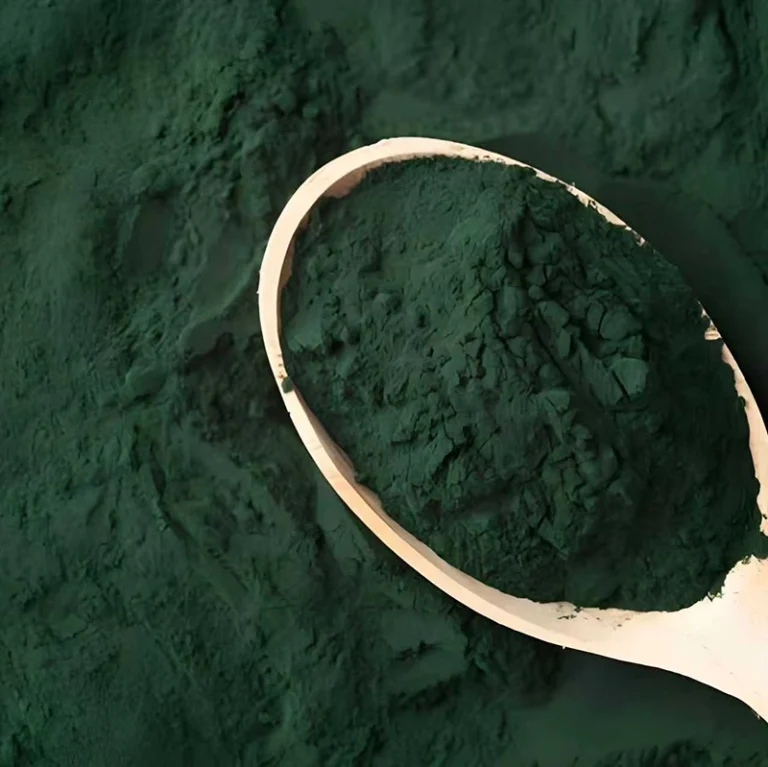Natural Astaxanthin Bulk Supplier & Manufacturer from China | High Purity
We are a trusted supplier from China, specializing in high-quality natural ingredients for cosmetics, health foods, and functional foods.
Natural Astaxanthin Bulk Supplier – Premium Manufacturer in China
Natural Astaxanthin Bulk Supplier & Manufacturer from China | High Purity

Why Choose Our Astaxanthin?
- Our Astaxanthin Base
Our production base benefits from ample sunlight, high-quality air, pure water sources, and suitable temperatures, providing an unparalleled natural environment for the development of Haematococcus pluvialis. With a 350,000 m² industrial base for Haematococcus pluvialis, the average annual astaxanthin content exceeds 6%. The algae cultivated in high-altitude, pristine waters are more natural, organic, and pollution-free. - Premium Water Source
The water used in our production comes from the Himalayas, over 8,000 meters above sea level—some of the purest and cleanest water from high-altitude snowy mountains. From the Himalayas to our factory, the water passes through the Jinsha River, the source of the Yangtze River, with no heavy industrial pollution along the way. Membrane filtration serves as the second “guarantee” to remove impurities and ensure water quality. Regular analysis is the third “guarantee” to ensure the water meets the growth conditions for algae, thereby guaranteeing the quality of the final product. - CO₂ Supercritical Fluid Extraction Technology
We utilize the most efficient, safe, and pure microalgae extraction technology. During the supercritical fluid extraction process, supercritical CO₂ is used as the solvent. After extraction, the liquid CO₂ evaporates naturally, ensuring the raw material is pure and free from chemical residues. - Enhanced Stability, Bioavailability, and Water Solubility
Through nano-processing, the effective components of microalgae achieve an average particle size of 50nm, increasing bioavailability by 6 times. After microencapsulation, stability is improved, and the product becomes water-soluble, significantly expanding its application scenarios.
Verified Quality and Safety
Our astaxanthin undergoes strict quality control:
Total Astaxanthin Content: ≥10% (typically 10.5%)
All-trans Astaxanthin Content: ≥7% (typically 8.4%)
Trans Isomer Ratio: ≥70% (typically 80%)
Heavy Metals and Microbial Contaminants: Undetectable
COA Provided: A complete Certificate of Analysis is provided for each batch
Certificate Of Analysis (COA)
| TestItems | TestStandard | Judgment |
| Total Astaxanthin | ≥10.0%(HPLC) | 10.50% |
| All-trans Astaxanthin | ≥7.0%(HPLC) | 8.40% |
| All-trans/Total Astaxanthin Ratio | ≥70.0% | 80.00% |
| Total Carotenoids | ≥10.0%(UV) | 11.10% |
| Appearance | Dark red oil | Conform |
| Odor | Slight seaweed odor | Conform |
| Loss on Drying | ≤0.5% | 0.20% |
| *Acid Value (KOH) | ≤4.0mg/g | 3.58 mg/g |
| *Peroxide Value | ≤0.25g/100g | 0.12 g/100g |
| *Lead (Pb) | ≤0.08 mg/kg | Not Detected |
| *Cadmium (Cd) | ≤1.0mg/kg | Not Detected |
| *Mercury (Hg) | ≤0.1mg/kg | Not Detected |
| *Arsenic (As) | <1.0mg/kg | 0.0901 mg/kg |
| *DEHP | ≤1.5mg/kg | <0.5 mg/kg |
| *DINP | ≤9.0mg/kg | Not Detected |
| *DBP | ≤0.3mg/kg | <0.3 mg/kg |
| *Benzo[a]pyrene | 10μg/kg | Not Detected |
| *Microcystin-LR | ≤1.0μg/kg | Not Detected |
| *Microcystin-RR | ≤1.0μg/kg | Not Detected |
| *Microcystin-YR | 1.0 μg/kg | |
| Total Plate Count | 1,000 cfu/g | 10 cfu/g |
| Mold & Yeast | 100 cfu/g | <10cfu/g |
| Coliforms | 10 cfu/g | Not Detected |
| *Salmonella | Negative/25g | Not Detected |
| *Escherichia coli | ≤10 cfu/g | Not Detected |
| *Staphylococcus aureus | Negative/25g | Not Detected |
Product Catalog
Clinical Research Applications
Astaxanthin has been studied by research groups worldwide and is recognized as safe and effective. The number of scientific studies on natural astaxanthin is growing rapidly, with reliable documentation available for several different applications.
1.Astaxanthin can prevent oxidative damage to fat particles in the blood, improve blood lipid profiles, and promote better blood flow in capillaries.
| Dietary Supplement | •Reduces oxidative stress
•Improves lipid profile, reduces triglyceride-rich lipoproteins •Promotes better blood flow in capillaries |
| Dosage | 6, 8, 12, or 16 mg per day of Natural Astaxanthin |
| Time to Take Effect | 4 – 36 weeks |
| Gender | Female, Male |
| Age | 19 – 70 |
| Markers of Effectiveness | •Blood cell count and basic metabolic panel, including blood glucose, fatty acids, triglycerides, serum total cholesterol, LDL cholesterol, HDL cholesterol, serum adiponectin
•Rheological assessment / Blood flow velocity (flow properties of blood and its elements) •Endogenous antioxidants, such as paraoxonase •Inflammation markers, such as Interleukin-6 (IL-6), Interleukin-2 receptor (IL-2R), and Plasma C-reactive protein (CRP) |
2.Supplementing with astaxanthin and using skincare products containing astaxanthin can improve skin appearance, including dull complexion and fine lines.
| Dietary Supplement | •Enhances elasticity by strengthening the collagen layer
•Reduces wrinkles and improves skin microtexture •Restores photoaged skin by eliminating free radicals in all skin layers |
| Dosage | 6, 8, or 12 mg of Natural Astaxanthin per day |
| Effective Time | 7–28 days |
| Gender | Female, Male |
| Age | 20–65 |
| Markers of Effectiveness | •Patch test
•Visual inspection and evaluation of age spots, wrinkle image analysis •Skin moisture content and transepidermal water loss •Skin sebum content •Questionnaires and subjective skin condition assessment •Minimal erythema dose •UV-induced moisture changes and epidermal water loss |
3.Astaxanthin shows promise in improving vision by enhancing blood circulation in the eyes and reducing free radicals.
| Dietary Supplement | •Improves eye health by increasing capillary blood flow
•Enhances accommodation ability and visual acuity •Delays age-related vision degeneration by reducing free radicals in aqueous humor and improving blood flow in intraocular capillaries |
| Dosage | 5, 6, 9, or 12 mg of Natural Astaxanthin per day |
| Effective Time | 1–4 weeks |
| Gender | Female, Male |
| Age | 38–70 |
| Markers of Effectiveness | •Improved amplitude of accommodation
•Increased retinal capillary blood flow •Alleviation of symptoms related to accommodation ability and subjective fatigue •Elevated choroidal blood flow velocity •Vascular endothelial growth factor levels •Superoxide scavenging activity, hydrogen peroxide and total nitrogen peroxide levels |
4.Natural astaxanthin improves muscle function by reducing free radical damage and oxidative stress.
| Dietary Supplement | •Improves muscle endurance and strength
•Prevents muscle fatigue •Protects against exercise-induced free radical production •Inhibits lactate formation |
| Dosage | 4-12 mg of Natural Astaxanthin daily |
| Effective Time | 3-15 days |
| Gender | Male (clinical studies on female recovery from intense exercise are still lacking) |
| Age | 17-39 |
| Markers of Effectiveness | •Endurance tests, such as maximal oxygen uptake (VO₂max) test, cycling time trials
•Whole blood tests, including cholesterol (LDL, HDL), triglycerides, lactate, glucose •Muscle enzymes, such as aspartate aminotransferase, creatine kinase •Biomarkers of oxidative stress, such as advanced oxidation protein products, redox balance, and levels of total sulfhydryl groups and thiobarbituric acid reactive substances |
5.Astaxanthin helps prevent or improve diabetes and its complications.
| Dietary Supplement | •Provides preventive effects against diabetes and atherosclerosis
•Reduces fructosamine concentration (p<0.05) and decreases blood glucose levels •Improves oxidative stress and certain inflammatory biomarkers, particularly in patients with type 2 diabetes (T2DM) |
| Dosage | 8–12 mg of Natural Astaxanthin daily |
| Effective Time | 8–36 weeks |
| Gender | Female; Male |
| Age | 20–70 |
| Markers of Effectiveness | •Reduction in glycated hemoglobin A1c (HbA1c) and apolipoprotein E levels
•Decreased fructosamine concentration (p<0.05) •Lowered blood glucose concentration |
Frequently Asked Questions (FAQ)
Q1: What is astaxanthin?
A: Astaxanthin is often referred to as the “King of Carotenoids” because it is the most powerful antioxidant found in nature.
Q2: What are the commercial sources of astaxanthin?
A: There are three commercial sources of astaxanthin: Haematococcus pluvialis, synthetic, and microbial fermentation.
Q3: Which type of astaxanthin is approved as safe?
A: In fact, only astaxanthin extracted from Haematococcus pluvialis is approved and recognized as safe for human consumption.
Q4: What are the U.S. regulatory requirements for astaxanthin?
A: The FDA has approved natural algal astaxanthin from Haematococcus pluvialis as Generally Recognized As Safe (GRAS). The FDA-approved safe dosage is 12mg per day.
Q5: What are the EU regulatory requirements for astaxanthin?
A: The European Food Safety Authority has approved astaxanthin from Haematococcus pluvialis as a Novel Food ingredient. The panel concluded that a daily intake of 8mg of astaxanthin from food supplements is safe for adults.
Q6: What are China’s regulatory requirements for astaxanthin?
A: The China Food and Drug Administration has approved Haematococcus pluvialis as a Novel Food. The recommended daily intake of Haematococcus pluvialis is no more than 0.8g per day, equivalent to a maximum astaxanthin intake of 24mg per day.
Q7: How to choose a supplier of Haematococcus pluvialis-sourced astaxanthin?
A: There are several producers of Haematococcus pluvialis astaxanthin worldwide, each with different production methods. We believe a good algal astaxanthin producer should at least possess the following characteristics:
•Excellent pollution control. A closed PBR system is definitely better than an open raceway system exposed to the outdoors.
•Clean water sources are crucial.
•Cultivation under natural sunlight ensures true naturalness.
•No damage to the ecological environment.

